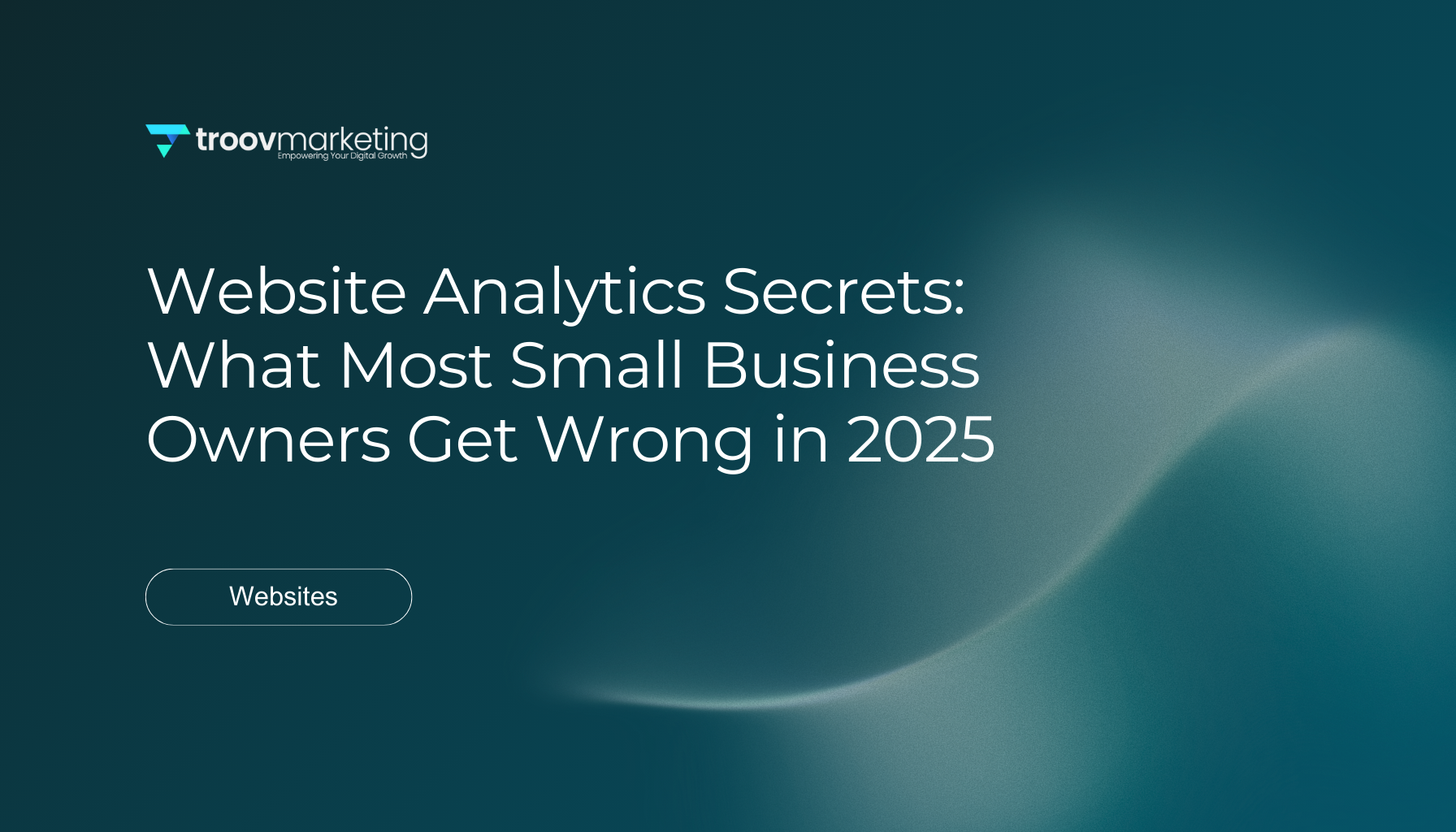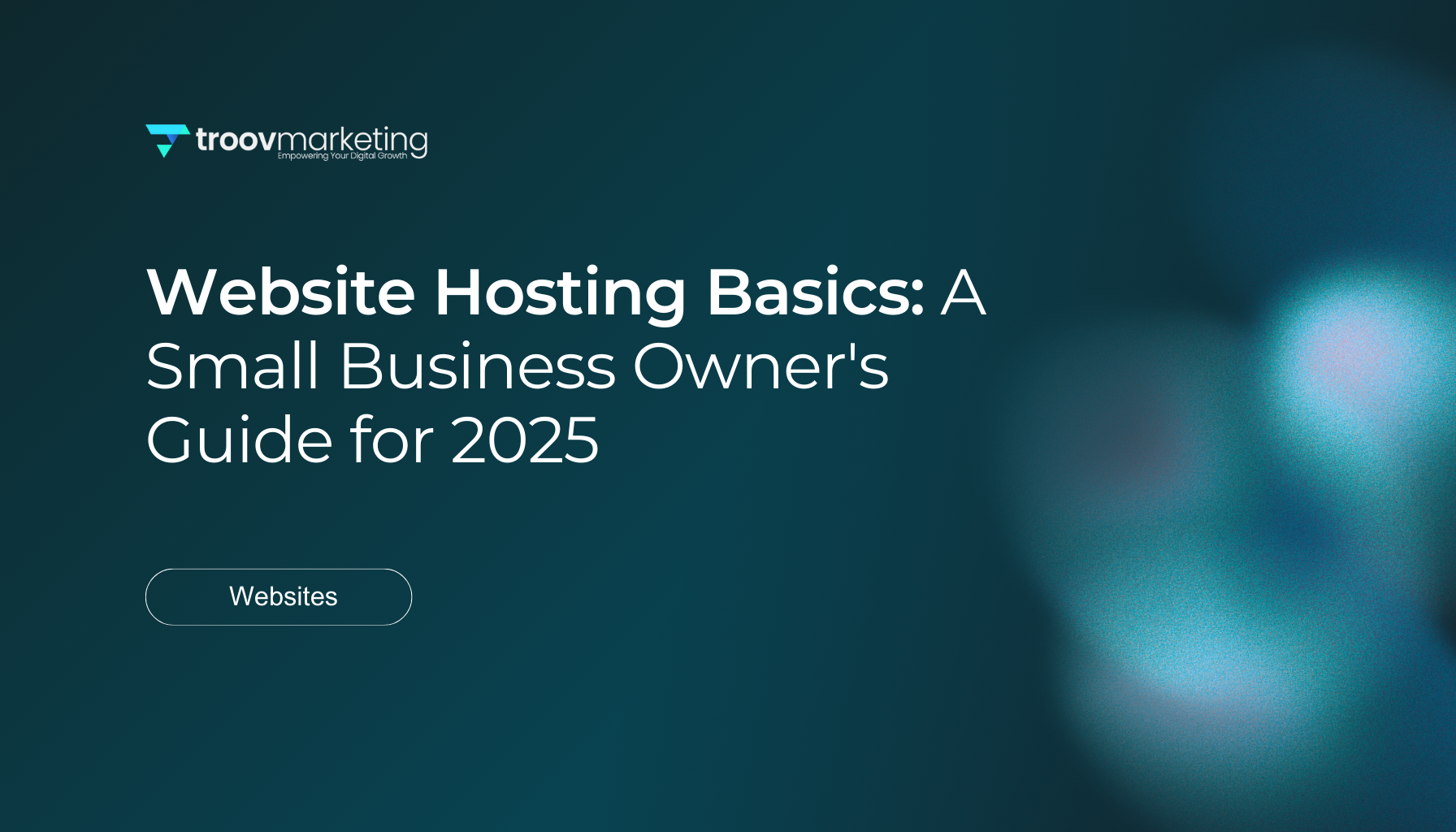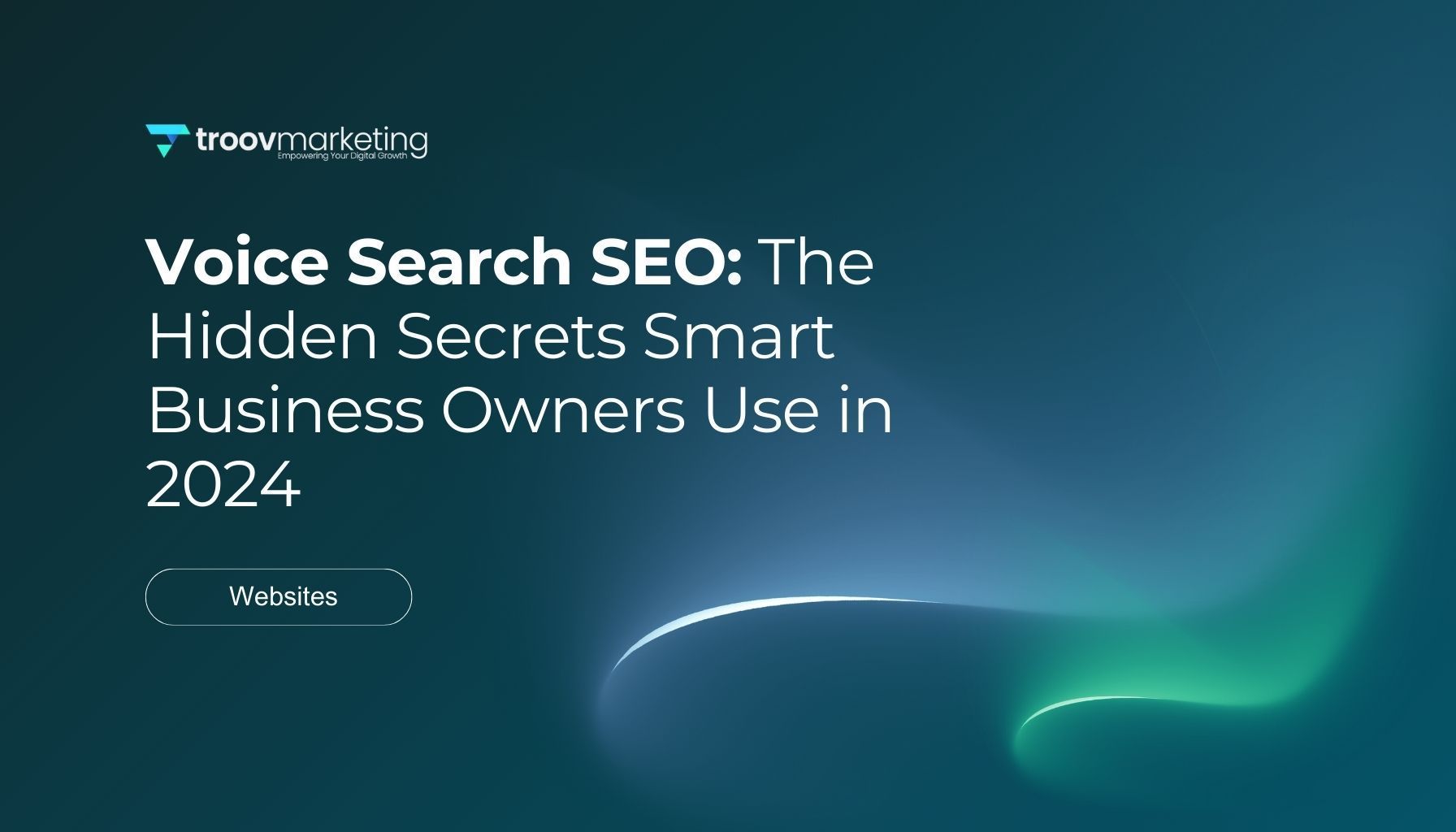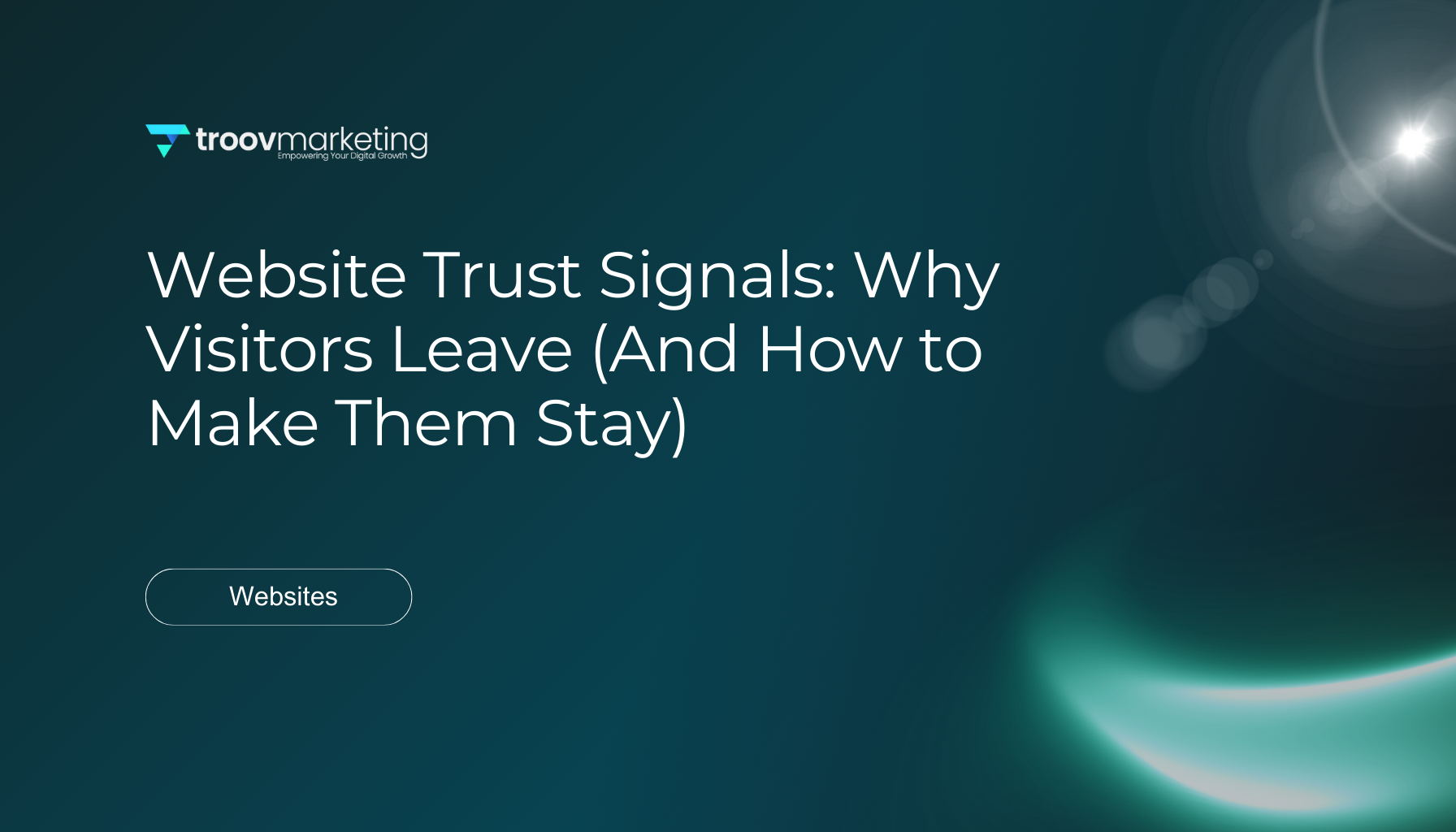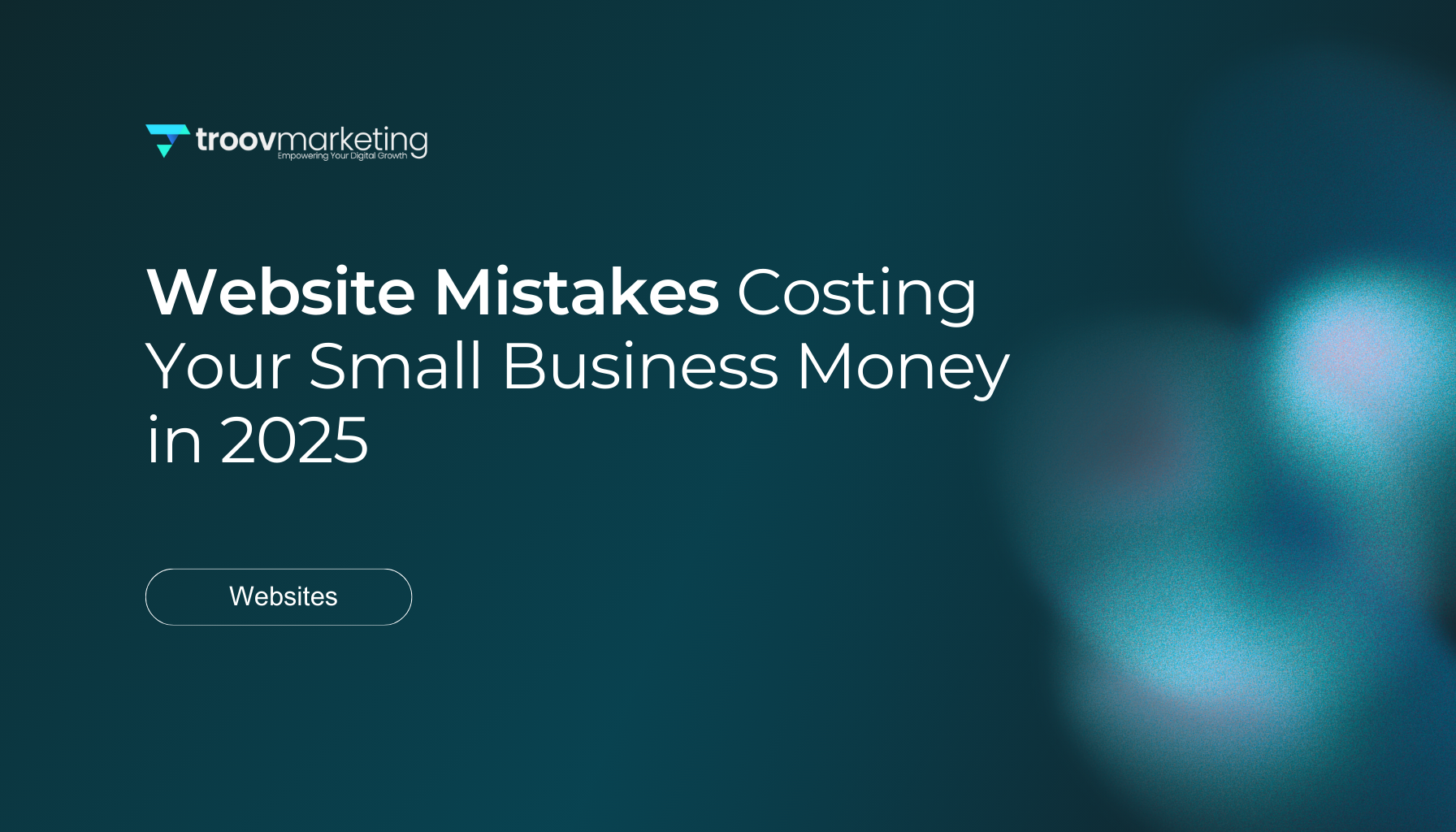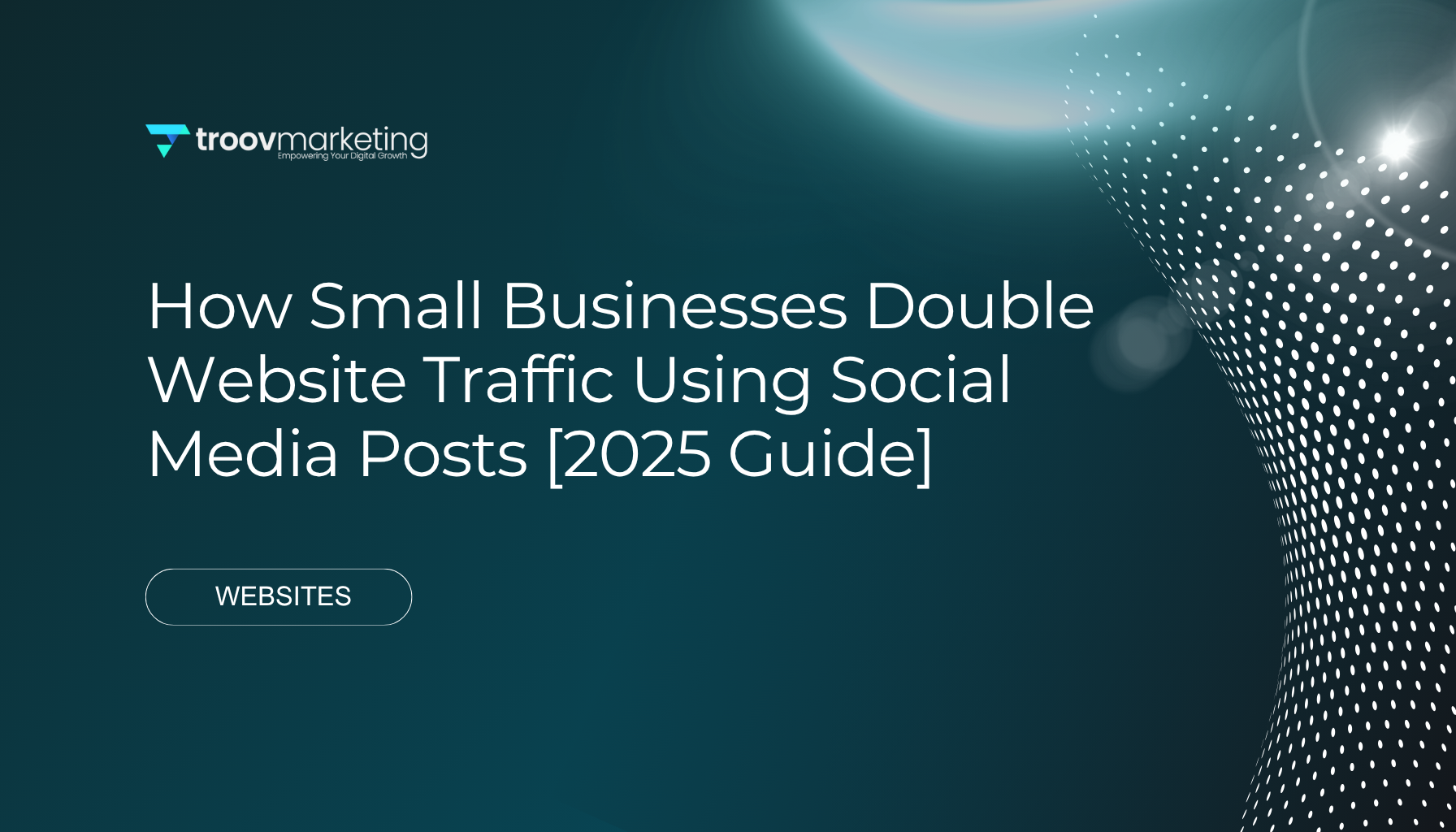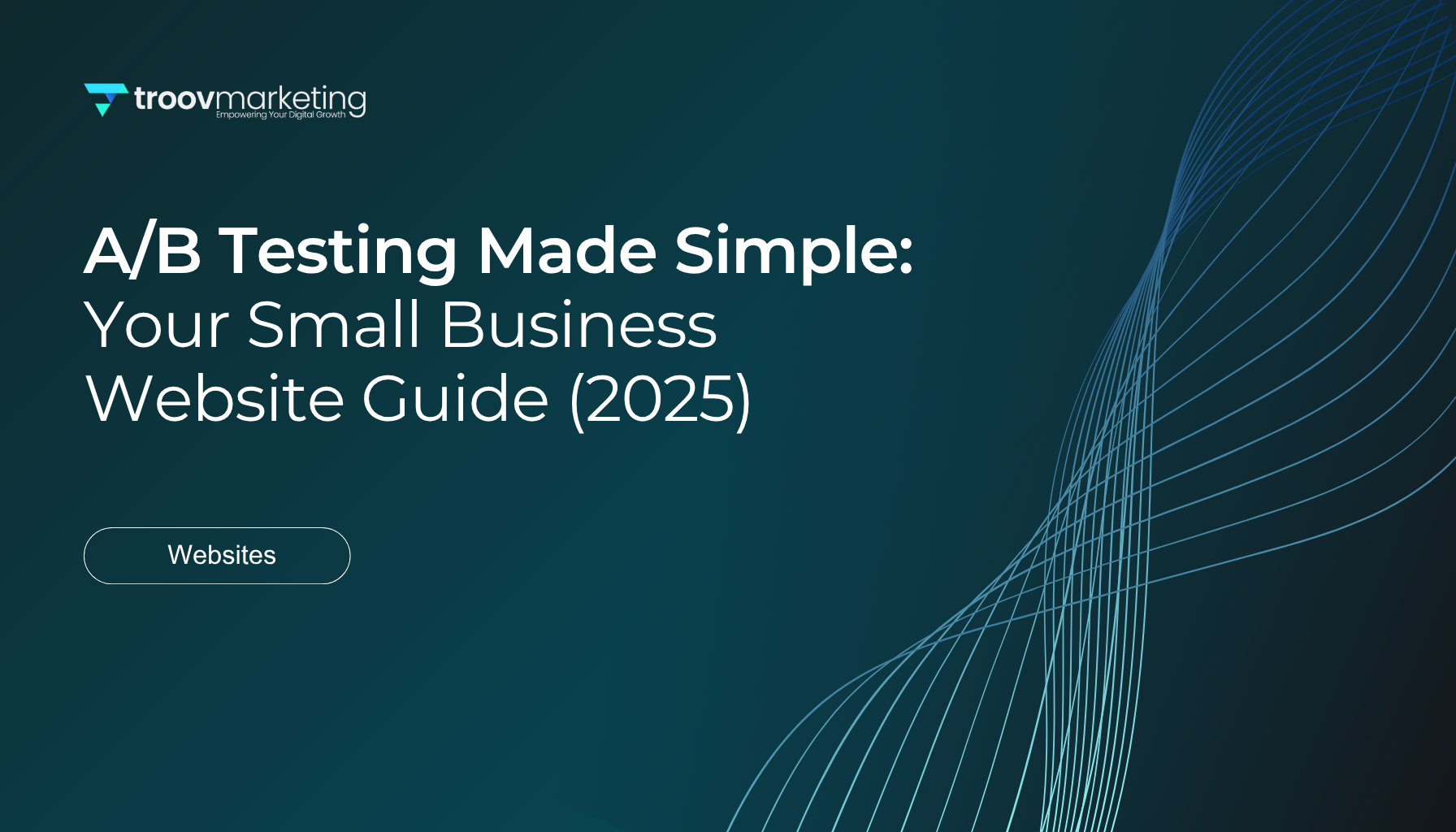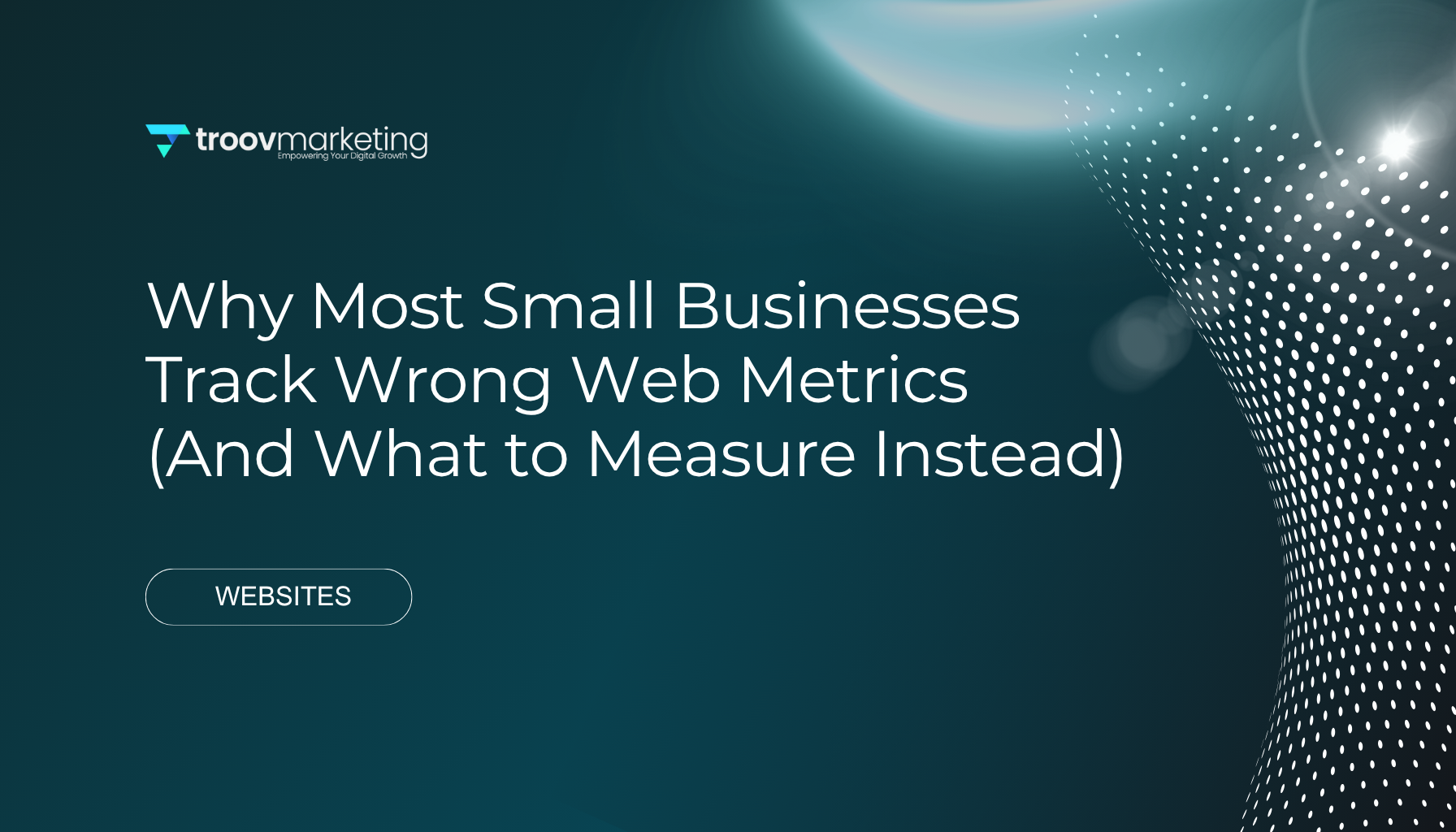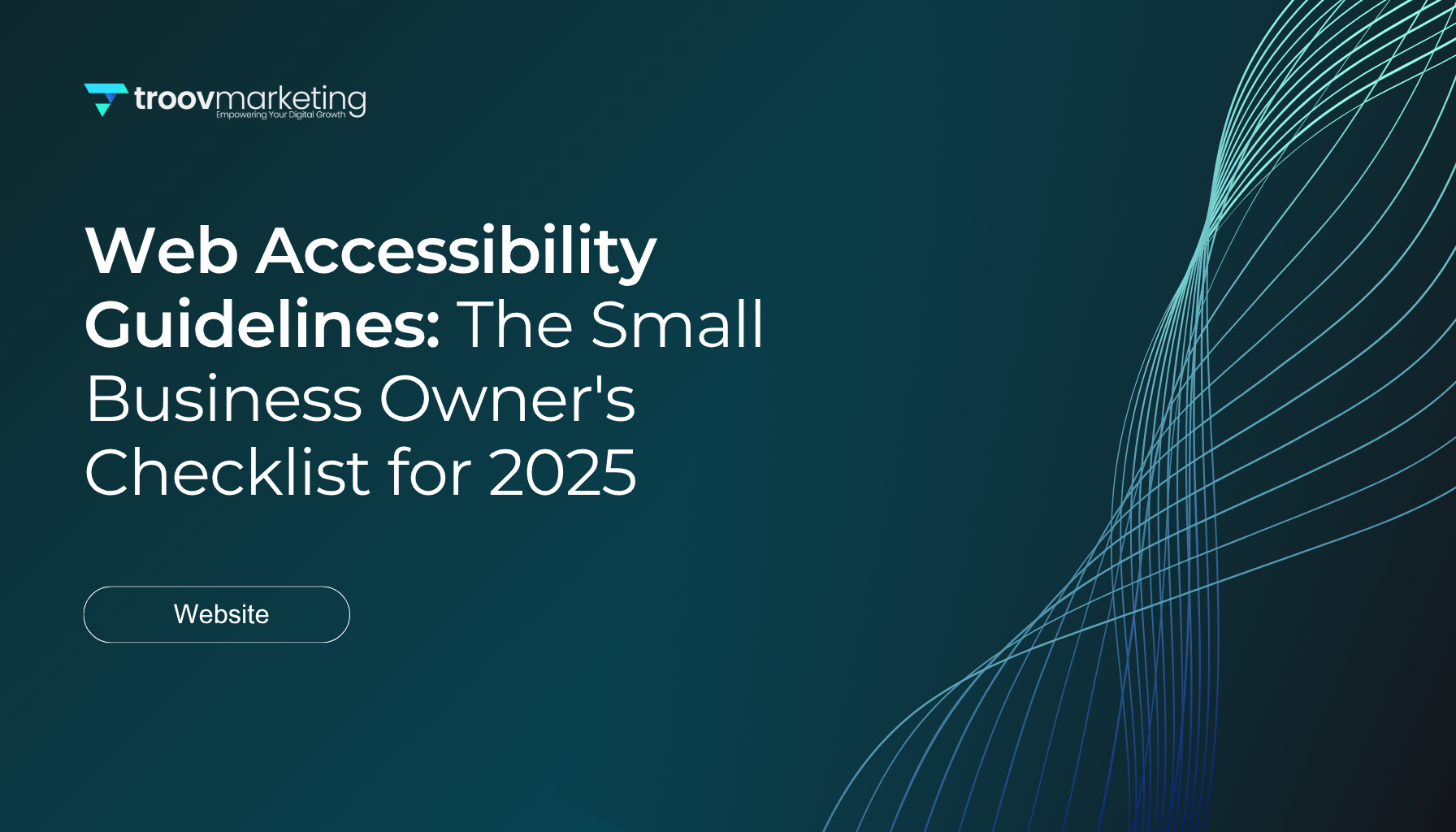Website Design Cost 2025: What Small Business Owners Actually Pay
Website Design Cost 2025: What Small Business Owners Actually Pay
Need to figure out website design costs for your small business in 2025? You're definitely not alone. A professional website is a vital investment in your business's future. Understanding the actual costs will help you create a realistic budget.
Australian businesses pay between $6,000 and $25,000+ for professional websites . These prices change substantially based on what you need. A basic static business website costs $3,000 to $5,000 . Business websites with strategic features run from $5,000 to $10,000 . E-commerce websites typically cost between $6,000 and $15,000 , while complex versions can reach $25,000 . Custom enterprise solutions start at $30,000 .
This piece breaks down the factors that affect website development costs and gives you a clear picture of what small business owners really pay in 2025. You'll learn practical strategies to maximize your website investment, whatever your budget looks like.
What small business websites actually cost in 2025
Small business website costs in 2025 vary widely based on complexity, features, and who builds them. Here's a clear breakdown of what you might pay for different types of websites.
Cost range for basic websites
A basic website works like a digital business card to show your key information without complex features. Small businesses that need a simple online presence can expect to pay between AUD 2,293 and AUD 7,645 for a basic business website [1]. You'll get:
- Pre-built templates with your brand colors and logo
- Simple pages (Home, About, Services, Contact)
- Mobile-friendly design and SEO setup
You can cut down costs to AUD 0 - AUD 1,529 [2] with DIY platforms like Wix or Squarespace, but you'll pay monthly fees. A professional will need 30-40 hours to build a simple business website, which costs AUD 4,587 - AUD 10,703 [3].
Freelancers offer the most economical professional option, charging AUD 3,058 - AUD 7,645 [3] for a basic 5-page website.
Cost range for strategic websites
Strategic business websites do more than just show information - they turn visitors into customers through smart design and features.
A strategic business website with custom design elements costs AUD 7,645 - AUD 22,935 [1]. This investment gets you:
- Custom design that matches your brand
- Advanced tools to capture leads
- Better SEO and faster loading times
- Room to grow as your business expands
The planning phase takes 10-20 hours, which adds AUD 1,529 - AUD 6,116 to the total cost [3]. These websites work great for businesses that want to boost sales through digital marketing [4].
Cost range for ecommerce websites
Adding online selling features makes website development more expensive because of the extra complexity. Small business owners in 2025 will pay between AUD 12,232 - AUD 45,870 for a detailed e-commerce website [1].
Your final price depends on:
- How many products you sell
- Which payment systems you use
- How you manage inventory
- What customer account features you need
A simple online store needs 50-125 hours of development time, costing AUD 7,645 - AUD 38,225 [3]. Retailers typically pay AUD 3,058 - AUD 30,580 [2].
Platforms like Shopify and BigCommerce offer cheaper starting options with monthly payments. Your monthly costs include:
- Domain name: AUD 15 - AUD 46 yearly
- Web hosting: Comes with most platforms
- SSL certificate: AUD 0 - AUD 306 yearly
- Payment processing: 1% - 3% plus fixed fees per sale [5]
Cost range for custom websites
Custom and enterprise websites cost the most. These specially built solutions range from AUD 45,870 - AUD 152,899+ [1] and suit businesses that need specific features.
Custom systems like booking tools, customer portals, and membership sites start at AUD 45,870 [3]. Enterprise websites come with:
- Advanced web tools and CRM systems
- Reliable hosting setup
- Custom design that grows with you
- Extra security features
Adding AI tools, chatbots, or recommendation systems can cost an extra AUD 1,529 - AUD 15,290 [2].
These custom projects take longer to build, often needing more than 200 hours of professional development time [3].
What goes into the cost of a website
Small business owners need to know what makes up website design costs to make smart budget decisions. A professional website comes together in several phases, and each one adds to the final cost. Let's get into what it takes to create a website and how different elements affect your budget.
Planning and strategy
The foundation of any successful website starts with proper planning. This original phase makes up 10-15% of your total project cost [6] and helps avoid expensive changes later. Web designers will work with you to understand your business goals, target audience, and what technical features you need.
You should expect to spend between AUD 764 and AUD 3,058 [1] on planning. This covers your meetings, research, site structure, and mapping out the user's experience. Some design firms will charge AUD 100 to AUD 300 [3] per hour for the first meetings, while others include this in the total project price.
Design and user experience
The design phase turns your plans into visual blueprints that will shape how well your website converts visitors. Much of your budget goes into this stage, with costs between AUD 1,529 and AUD 7,645 [1].
You'll need to choose between template or custom design. Template designs cost about AUD 3,058 to AUD 4,587 [6], while custom designs need a bigger investment—usually AUD 7,645 to AUD 22,935 [6] for small business websites.
UX design prices range from AUD 1,500 to AUD 5,000 [3], based on how complex your website needs to be. This investment gives you an accessible and user-friendly site that keeps visitors interested.
Development and coding
Developers turn approved designs into working websites through code and technical work. This takes the biggest chunk of your budget, ranging from AUD 4,587 to AUD 15,290+ [1].
Development costs break down into:
- Front-end development (user interface): AUD 3,000 to AUD 15,000 [3]
- Back-end development (server operations): AUD 3,000 to AUD 20,000+ [3]
- Third-party integrations: AUD 500 to AUD 5,000 [3]
Special features like booking systems, member areas, or unique functions can add AUD 1,000 to AUD 10,000+ [3] to your development costs.
Content creation and SEO
Good content helps engage visitors and boost search rankings. Professional writers charge between AUD 100 and AUD 500 per page [3], depending on what you need. Custom images and videos might add another AUD 500 to AUD 5,000 [3] to the total.
This phase typically runs between AUD 764 and AUD 4,587 [1], which includes writing, images, and basic SEO work. SEO services cost AUD 500 to AUD 3,000 [3] for initial optimization, while monthly ongoing work ranges from AUD 458 to AUD 5,351 [7].
Testing and launch
Your website needs thorough testing across devices and browsers before going live. This vital step costs between AUD 764 and AUD 2,293 [1], about AUD 400 to AUD 2,000 [8] of your total budget.
Testing looks at:
- Feature functionality
- Navigation ease
- Website speed and response times
Launch involves moving your site from testing to live servers and making final tweaks before public release.
Project management
Good project management is vital to website success and adds 10-15% to total project costs [6]. This service ranges from AUD 764 to AUD 3,058 [1] and helps prevent delays, confusion, and budget issues.
Project managers keep your team aligned and you informed throughout the process. They schedule regular updates and become your main contact point, making sure everything moves smoothly from start to finish.
These six components explain the wide range in website costs and help you plan your budget effectively.
Breakdown of essential website costs
Your website needs more than just design and development to stay up and running securely. Here's a breakdown of the ongoing costs you'll need to budget for your small business in 2025.
Domain name and SSL certificate
Think of your domain name as your business's online address. Domain registration costs AUD 15.29 to AUD 53.51 per year [9]. Many hosting providers give you free domain registration in the first year, but you'll need to pay renewal fees to keep it.
SSL (Secure Sockets Layer) certificates are vital for website security and building customer trust. These certificates protect data moving between your site and its visitors. This protection becomes even more important if you collect personal information or handle payments.
Here's what different SSL levels will cost you:
- Basic SSL certificates: AUD 0 (free) to AUD 30.58 [10]
- Standard business SSL: AUD 30.58 to AUD 155.96 [11]
- Extended validation SSL: AUD 214.06 to AUD 382.25 [11]
The good news is that many hosting providers include basic SSL certificates in their packages, which saves you money.
Web hosting options
Web hosting gives your website files a home online. The prices vary based on your traffic and technical needs:
- Shared hosting: AUD 3.82 to AUD 45.87 per month [9] (works well for small sites with moderate traffic)
- VPS hosting: AUD 22.86 to AUD 152.90 per month [4] (better for growing businesses)
- Dedicated hosting: AUD 152.90 to AUD 764.50 per month [12] (gives you full control and resources)
- Cloud hosting: AUD 45.87 to AUD 611.60 per month [12] (offers great scalability and reliability)
Most new website owners start with shared hosting because it's economical. You can always upgrade as your traffic grows. Good hosting services come with 24/7 support, security features, and automatic backups.
CMS or website builder
Content Management Systems (CMS) and website builders let you update and manage your site without technical knowledge.
WordPress leads the pack as the most popular CMS and it's free to install, but you'll need separate hosting. Website builders like Wix, Squarespace, or Hostinger Website Builder combine hosting and software in one package:
- Website builder plans: AUD 22.93 to AUD 30.58 per month [9] for versions without ads
- WordPress hosting: AUD 4.57 to AUD 71.65 per month [4] based on features
Free options exist but they usually show the provider's branding and limit what you can do. Business websites typically need paid plans to look professional.
Stock images and media
Quality visuals make your site more effective. Free image sources are available but often lack quality or have copyright issues. Here are your options:
- Royalty-free stock images: AUD 15.29 to AUD 68.80 per image [13]
- Professional photography: AUD 76.45 per image to AUD 15,289.90 for a full day shoot [9]
- Print-quality files: AUD 61.16 to AUD 229.35 [13] for high-resolution usage
Some website builders include stock image libraries in their subscription costs, which helps save money compared to buying images one by one.
Plugins and integrations
Plugins and integrations add features to your website without custom coding. These costs can add up:
- Essential plugins: AUD 76.45 to AUD 764.50 annually [1]
- E-commerce plugins: AUD 133.02 to AUD 966.32 per year [14]
- Marketing tools: AUD 91.74 to AUD 334.85 quarterly [14]
You'll find plugins with both subscription models and one-time payments. Premium themes cost AUD 45.87 to AUD 305.80 [15] but often reduce your need for multiple plugins.
These ongoing expenses make up about 25-30% of your annual website budget. Investing in quality components helps you avoid expensive downtime and security problems later.
Factors that influence website development cost
Your website's price isn't set in stone. It changes based on several key factors. You can make better choices about where to spend and save money when you know what these factors are.
Number of pages
Page count used to drive website costs, but things are different now. Modern platforms like WordPress have changed how page numbers relate to overall costs [5].
Every website project starts with a base cost. Even small sites need basic theme parts—headers, footers, menus, and various templates—that work on all screen sizes [5]. The core setup costs stay about the same.
All the same, having many pages adds to the cost through:
- More complex information structure (especially with hundreds of pages)
- Extra custom templates beyond the basics
- Moving content costs during redesigns
- Different content parts for various layouts [5]
Small business owners should know that a 5-10 page site costs less than a 50-page website with many product categories and interactive features [16].
Custom vs template design
Choosing between custom design and templates is one of the biggest factors in website cost.
Custom websites give you complete creative freedom and unique features. They work best for businesses with specific needs or strong brands [17]. Your site can grow as needed, rank better in search engines, and give users a better experience [17]. The downside? Higher upfront costs—between AUD 3,057.98 to AUD 15,289.90 for the first build [18].
Templates offer a budget-friendly choice with clear benefits:
- Much lower starting costs (some as low as AUD 38.22 one-time) [18]
- Faster setup and launch
- Ready-made features like contact forms and galleries [17]
Your business needs will help you decide—templates are great for simple information sites, while custom designs suit businesses that need specific features or want to stand out.
Level of interactivity
Interactive features can really drive up website development costs. Each extra interactive element makes the site more complex and takes longer to build [19].
Basic interactive parts like image sliders, dropdown menus, and contact forms don't cost much extra [2]. But features like live chat, user content, or custom animations need more skilled developers [2].
Interactive websites usually fall into these price ranges:
- Basic interactive website: AUD 1,528.99 – AUD 7,644.95 [2]
- Mid-range interactive website: AUD 7,644.95 – AUD 30,579.80 [2]
- Complex interactive website: AUD 30,579.80+ [2]
More interactive features mean more development time and specialized skills, which affects your final cost.
Third-party integrations
Linking your website to other systems or services makes development more complex and expensive [20]. These connections need special skills and thorough testing to work right.
Website costs go up when you add:
- CRM platforms and marketing automation tools
- Payment systems and inventory managers
- Accounting software and shipping services [21]
Custom API connections take lots of development time and expertise [21]. Many third-party tools also come with ongoing fees based on how much you use them [21].
These integrations make up a big part of website costs, especially for online stores or membership sites.
Mobile responsiveness
Mobile devices generate over 60% of web traffic, so responsive design is a must [3]. It affects how people interact with your brand online and helps your search rankings.
Responsive design does more than just make your site mobile-friendly. Your site automatically adjusts its layout, images, and features to fit any screen size [3].
Mobile responsiveness adds to development costs through:
- Making all design elements responsive
- Testing on different devices
- Making the site fast on mobile networks [3]
The good news? Responsive design saves money over time—you only need to maintain one site instead of separate mobile and desktop versions [22]. Basic mobile responsiveness adds AUD 764.50 to AUD 3,057.98 to your costs, while mobile-first designs can add AUD 3,057.98 to AUD 7,644.95 [23].
These five factors help you spot what might increase your website costs and where you can save money without cutting corners.
Freelancer vs agency: what small businesses pay
The cost of your website design largely depends on whether you choose a freelancer or an agency. This decision will not only affect your budget but also ended up determining the quality and functionality of your final website.
Typical freelancer rates
Freelance web designers charge between AUD 38 to AUD 153 per hour [24], and the average rate sits at AUD 115 per hour [25]. They also offer project-based pricing:
- Standard 5-page website: AUD 764 to AUD 2,500 [7]
- Small business website: AUD 3,000 to AUD 5,000 [7]
- E-commerce store: AUD 2,000 to AUD 5,000 [7]
Small businesses with tight budgets often prefer freelancers since they charge 30-50% less than agencies [7].
What agencies charge
Design agencies set higher rates that range from AUD 115 to AUD 306+ per hour [24]. Their complete project charges look like this:
- Basic website (5 pages): AUD 3,000 to AUD 5,000 [7]
- Small business website: AUD 5,000 to AUD 7,000 [7]
- E-commerce store: AUD 5,000 to AUD 10,000 [7]
Their ongoing maintenance through monthly retainers costs between AUD 1,529 to AUD 15,290 [24], based on service levels.
Pros and cons of each
Freelancers keep costs down because they have minimal overhead [26]. You get to communicate with the designer directly [7] and enjoy more flexible scheduling [7]. However, they might struggle with large projects [7] and could become unavailable without notice [7].
Agencies give you access to different specialists [24], follow well-laid-out processes [7], and offer reliable service through contracts [7]. They also provide detailed support packages [7]. The biggest drawback? They cost by a lot more [7].
When to choose which
A freelancer might be your best bet if:
- You need a simple, straightforward project done [27]
- Your budget is tight [27]
- You can be flexible with timelines [27]
- You need expertise in one specific area [24]
An agency makes more sense when:
- Your project needs multiple experts [27]
- You want quick results [27]
- You need guaranteed reliability [7]
- You're looking for a long-term partner [27]
Your specific business needs, project complexity, and budget should guide your final choice.
How to reduce your website design cost
Want to cut your website design costs without compromising on quality? Here are practical ways small business owners can reduce their website design expenses in 2025.
Use pre-made templates
Pre-made templates are a great way to save money compared to custom designs. You'll pay between AUD 30.58 to AUD 91.74 as a one-time fee for template websites [28]. This is much cheaper than custom designs that start at AUD 3,057.98 [29]. Templates come with simple layouts that save development time [28]. Many include built-in features like contact forms and galleries [28]. Small businesses with straightforward needs can get a professional look without breaking the bank [30].
Write your own content
Writing website content yourself is one of the easiest ways to cut costs. Professional copywriters charge AUD 100 to AUD 500 per page, so doing it yourself saves money right away [31]. The key is to know your target audience well. Keep your writing conversational and break text into short paragraphs that are easy to read [31]. Just make sure to proofread everything carefully [31].
Limit initial features
Your initial development costs stay under control when you start with core functionality. You should identify must-have pages and features early to avoid expensive changes down the road [32]. The smart move is to put your money into critical components first [33]. Your business can add more complex features as it grows [33]. This step-by-step approach helps you avoid spending on features you don't need yet [34].
Choose scalable platforms
The right platform choice leads to long-term savings. Open-source CMS platforms like WordPress give you flexibility without charging licensing fees [31]. These platforms grow with your business so you won't need complete redesigns later [29]. Cloud-based solutions let you pay only for what you use, which helps optimize costs [35]. A scalable foundation today prevents expensive platform changes tomorrow.
Bundle services with one provider
Working with one provider for multiple services often unlocks big discounts. You can get website design, SEO, maintenance, and digital marketing in bundled packages that cost less than buying each service separately [8]. Getting individual services creates more paperwork and usually costs more [8]. Bundled services help keep your brand message consistent across digital channels [8]. Look for providers who offer complete packages that match your business goals.
Conclusion
A website is a big investment for any small business owner. Website costs in 2025 show wide variations based on complexity, functionality, and who builds it. Simple websites start at AUD 2,293, and this is a big deal as it means that custom enterprise solutions can reach AUD 150,000.
Your budget matters, but knowing what affects website costs helps you make smarter decisions. Each part of the process shapes your total investment - from original planning and design to regular costs like hosting and maintenance.
Small business owners often choose between hiring a freelancer or partnering with an agency. Freelancers cost 30-50% less, yet agencies provide detailed services with better reliability. Project complexity, timeline needs, and your budget will shape this choice.
Budget-friendly strategies can help small business owners. You can streamline costs without losing quality by using pre-made templates, creating your own content, focusing on core features, picking expandable platforms, and combining services.
Note that your website works as your storefront in the digital world. Cost is important, but we focused on building a professional online presence that turns visitors into customers. A well-laid-out website generates enough sales and credibility to cover its costs.
Your website project needs balance between current budget limits and future business goals. Higher upfront investment often brings better returns through improved performance and lower maintenance costs. Your website stands as one of your business's most valuable marketing tools.
Key Takeaways
Understanding website design costs in 2025 helps small business owners budget effectively and make informed decisions about their digital investment.
• Small business websites range from AUD 2,293 for basic sites to AUD 152,899+ for custom solutions, with strategic websites costing AUD 7,645-22,935.
• Freelancers charge 30-50% less than agencies (AUD 38-153/hour vs AUD 115-306+/hour) but agencies offer comprehensive teams and reliability.
• Essential ongoing costs include domain registration (AUD 15-54/year), hosting (AUD 46-765/month), and SSL certificates (free to AUD 382/year).
• Reduce costs by using pre-made templates, writing your own content, limiting initial features, and bundling services with one provider.
• Focus on creating a professional online presence that converts visitors into customers—your website is a valuable marketing asset that pays for itself through increased sales.
FAQs
Q1. How much does a small business website typically cost in 2025? Most small business websites cost between AUD 1,500 to AUD 15,000. The price varies based on factors like complexity, features, and whether you choose a freelancer or agency for development.
Q2. What are some ways to reduce website design costs? You can reduce costs by using pre-made templates, writing your own content, limiting initial features to essentials, choosing scalable platforms, and bundling services with one provider.
Q3. Is it better to hire a freelancer or an agency for website design? The choice depends on your specific needs. Freelancers are generally more affordable (30-50% less) and offer flexibility, while agencies provide comprehensive services and greater reliability. Consider your project complexity, timeline, and budget when deciding.
Q4. What ongoing costs should I expect for my website? Ongoing costs typically include domain registration (AUD 15-54/year), web hosting (AUD 46-765/month depending on your needs), and SSL certificates (free to AUD 382/year). You may also have expenses for content updates, security maintenance, and plugin subscriptions.
Q5. How does e-commerce functionality affect website cost? Adding e-commerce functionality significantly increases website costs due to the complexity involved. E-commerce websites for small businesses typically range from AUD 12,000 to AUD 45,000, depending on factors like the number of products, payment integrations, and inventory management requirements.
